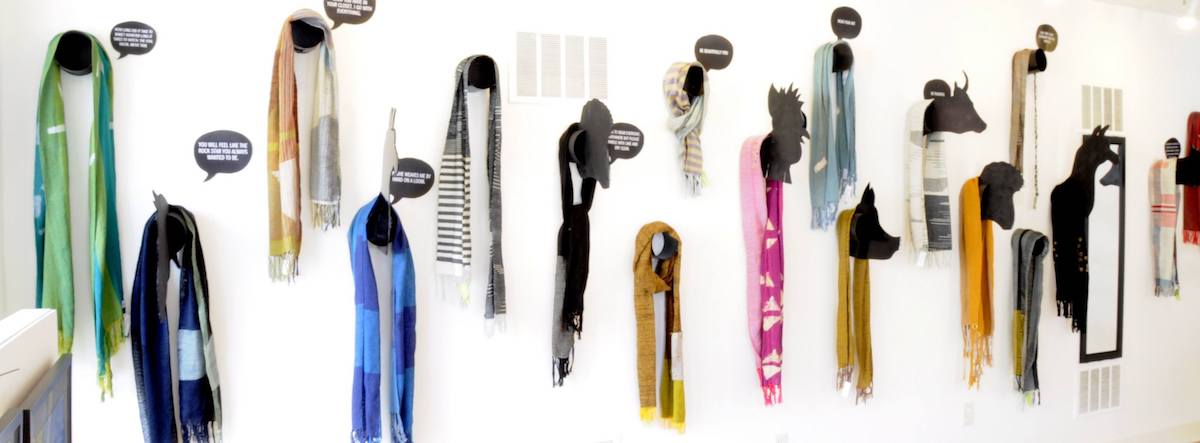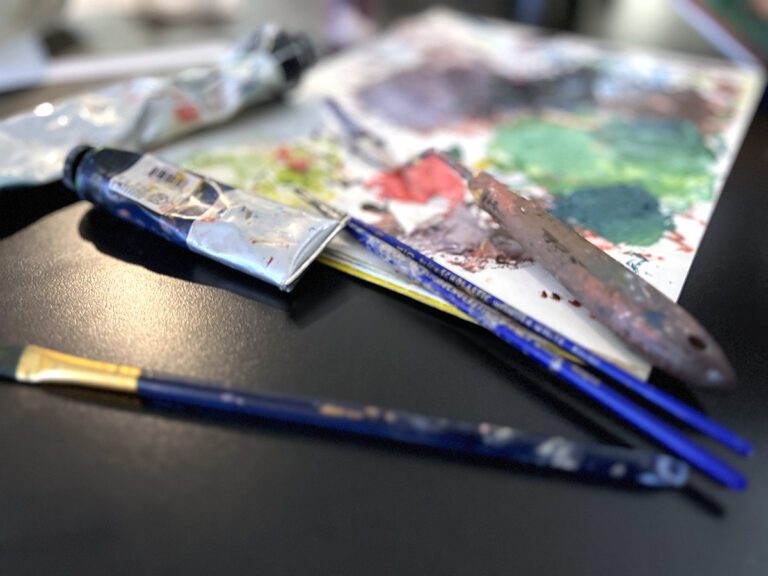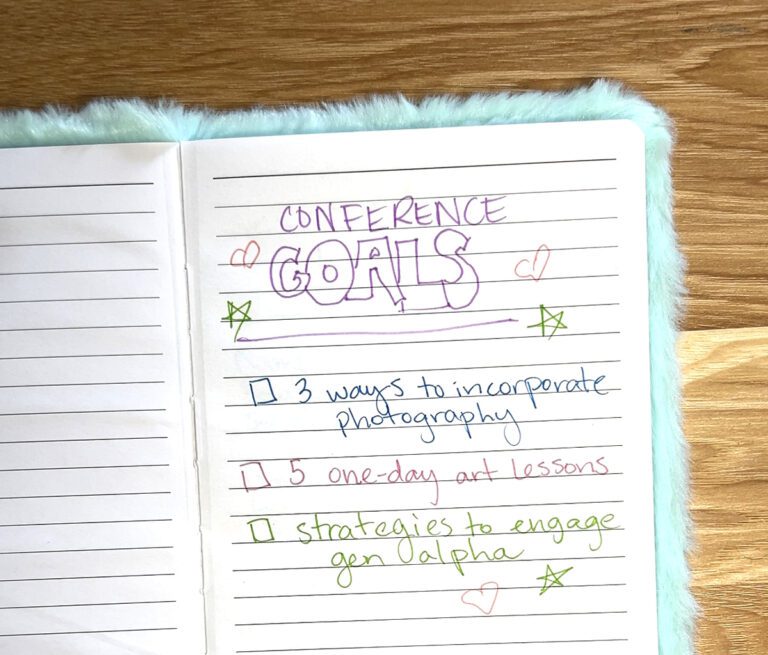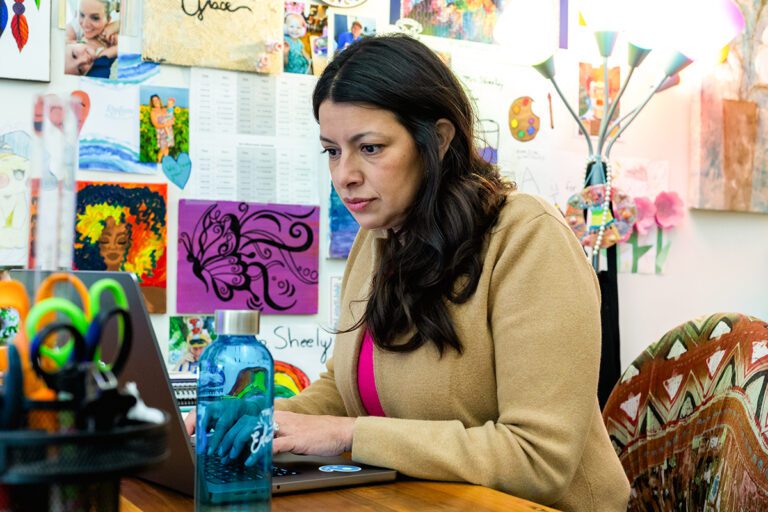As summer draws near, you’re probably dreaming about sitting at the beach, getting the perfect tan, and not hearing your name ten thousand times. Or is that just me?
But as nice as it sounds, you may actually need to take the time to make some extra cash.
Why not find a way to push yourself professionally, have fun, and make money all at the same time?
Sound too good to be true? It’s not. You can do it by making and selling your art!
As an art teacher, it can be hard to find the time to create. You’re busy writing lesson plans, grading, and attempting to organize your supply closet. But what if you were making art and extra money?
Let’s look at 2 ways you can start selling your artwork this summer.
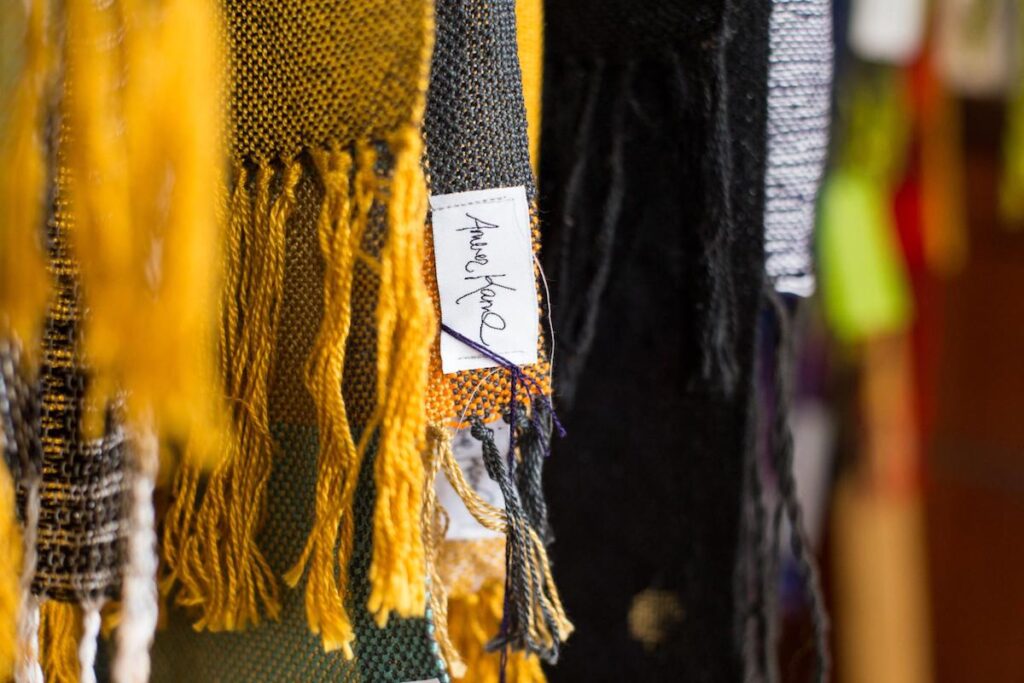
Set Up an Online Shop
Setting up an online shop may seem daunting. But, with a few key decisions under your belt, you’ll be up and running in no time. Here’s how to get started.
1. Choose the Right Platform
There are many platforms to sell online. One of the most well-known is Etsy. Other popular options include sites like Shopify and Big Cartel. While Etsy might seem easier, it can be hard to stand out in the crowd. Instead, I recommend opting to creating your own website and shop. Here’s why…
2. Build Your Website
When you take the time to build your site, you’re not only setting up a space to sell your work; you’re also building an online portfolio, which can be a powerful tool for gaining clients and landing jobs.
There are plenty of user-friendly website building platforms. You might check out Squarespace or Wix to get started.
Once you’ve selected your platform, you’ll need to decide on a name. You’re a working artist, so if possible, you’ll want to use your name. If that’s not available, select something close to your name and easy to remember.
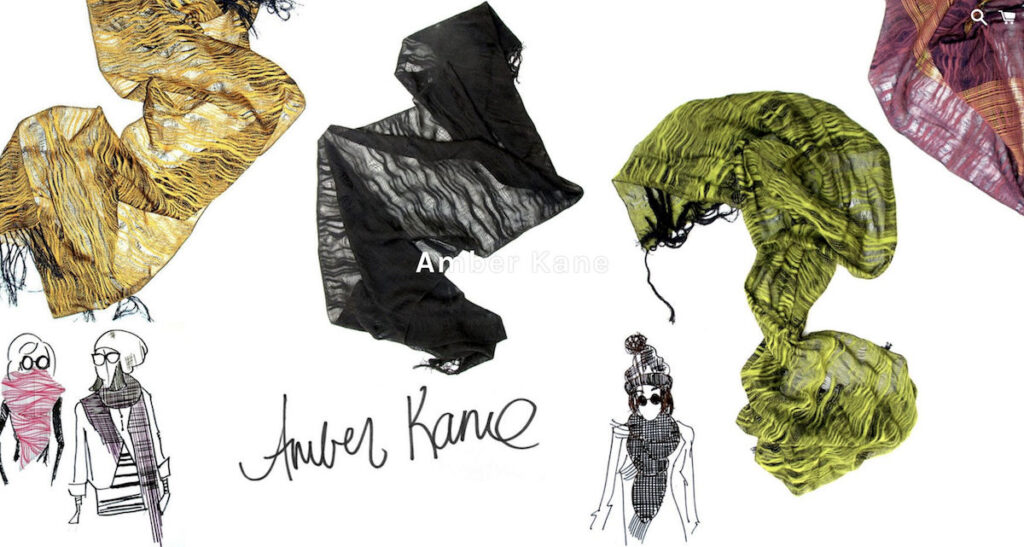
3. Put the Two Together
Once you’ve selected your website platform, you’ll need to connect your shop. As I mentioned, two big players in the game are Shopify and Big Cartel. Take the time to explore both and ask questions. In my experience, Shopify has great customer service and helps make the set-up process easy.
While it takes work to get your site set up, once you have it running, it can work for you year round. You can also turn the shop on and off, so you can decide when you want to keep inventory and when you don’t.
4. Add Products
Once you have your website and shop ready to go, the last step is adding products.
When taking photographs of your items, keep them simple. Make sure the focus is the product or work of art. Have at least one photo with a solid background featuring each piece. If you want to get fancy and stage the work, that’s fine as an additional photo. You’ll also want to make sure you have your white balance set properly on your camera. Otherwise, the colors may show up much differently on the computer screen than in person.
Next, you’ll need to write a description. Pay attention to brands and shops where you enjoy shopping and note what information they include that you find helpful. I love the descriptions that apparel and goods store J. Peterman uses. In fact, I get their catalog just so I can read the stories and look at the illustrations.
Finally, develop and publish your shop policy information. You’ll need to determine your return policy, but it’s also helpful to include information about when or how quickly you ship items.
Explore Working with a Gallery
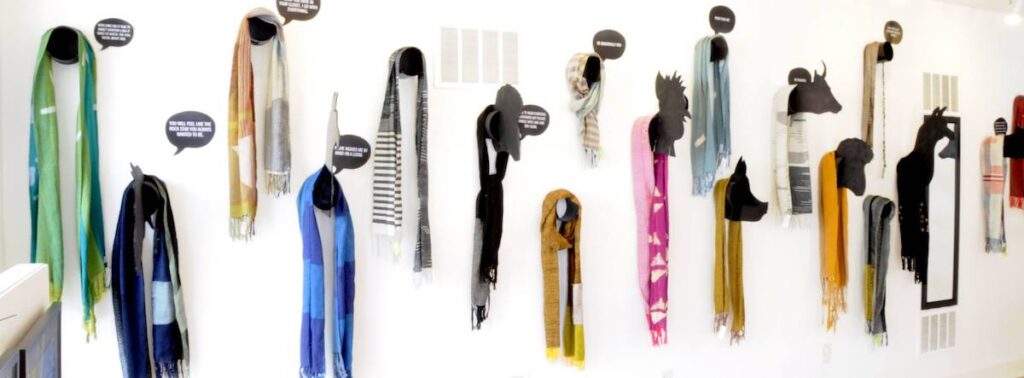
If selling online isn’t your thing, you may want to explore working with galleries. Here are 7 tips to get started.
1. Have confidence.
When I first started thinking about having galleries sell my work, I was terrified. Surely, I wasn’t good enough to have work in a gallery.
I also fell for the common misconception that I needed to wait for the gallery to come to me. (Not true, or recommended. Gallery owners are busy– running their galleries!)
2. Understand commission.
Before diving headfirst into connecting with galleries, understand it’s likely that they’re going to sell your work on commission. Most of the time this is a 60/40 split (with the gallery keeping 60%), but the percentage can sometimes be negotiated.
Having the gallery take a 60% cut might seem like a lot, but stay with me.
When you do the math, it makes sense. When galleries sell your work, they take on the marketing cost, the space overhead, and the time to sell your work. Plus, they often have a solid customer base to which you are now exposing your work.
3. Make a game plan.
Before approaching a gallery, do your homework. Make sure your style makes sense with the other work the gallery carries. Also, take the time to explore their website. Look for information about how they work with artists, and see if they have clear terms about how they wish to be contacted.
If you’re an extrovert, you may be tempted to march into a gallery with samples of your work, asking for the owner. As a former gallery owner, I wouldn’t recommend this method. During open hours, the person working at the gallery is there to talk with customers, they don’t want to be distracted by you. Even if there aren’t customers, still don’t do this. The gallery owner has a lot on his or her plate; taking inventory, marketing, and shipping online orders. Instead, do some research first, and send an introduction email.
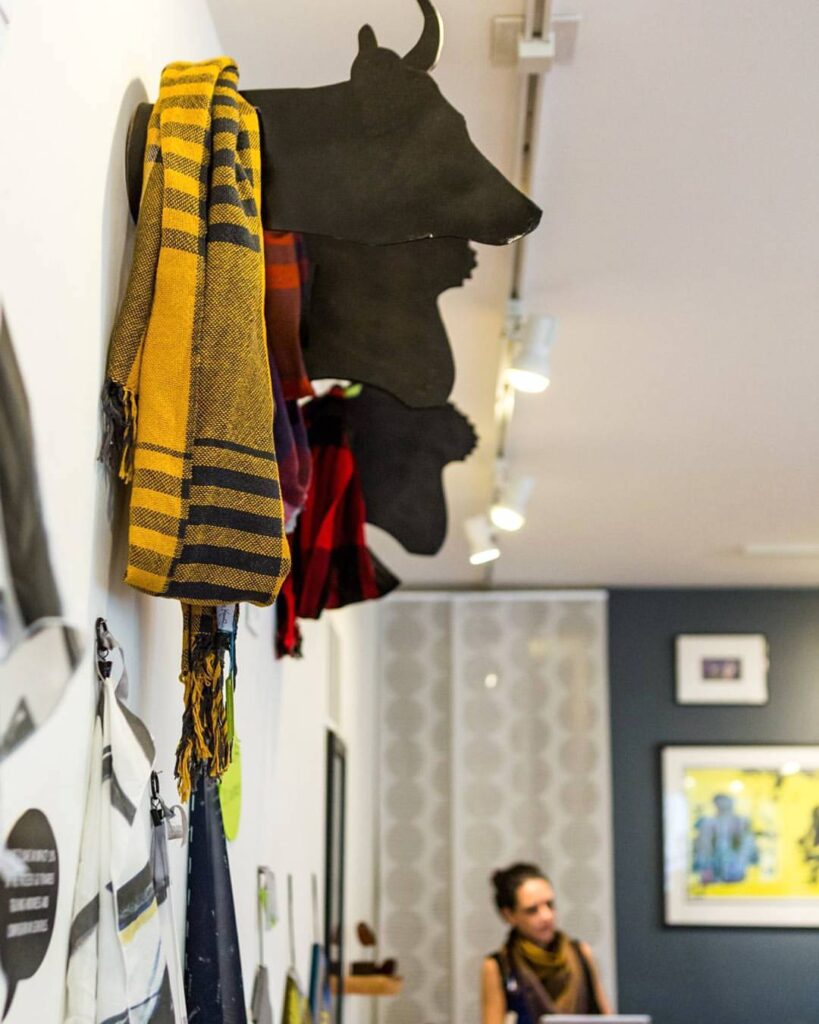
4. Write a solid introduction email.
Here are two ways you might construct such an email.
Example 1
Dear_____,
I recently visited your gallery and love the glass work you carry, along with the overall modern aesthetic of your space.
I create abstract landscape paintings that I think would be a good fit in your gallery. I’ve included a few photos along with a link to my website. If you agree my work is a good fit for your space, I’d love to arrange a time to show you the work in person and discuss details.
Example 2
Dear _____,
I really enjoyed your recent show, “Eyes In The Sky.” My favorite piece was, Untitled #5, by Amber Kane. I always look forward to the rotation of artists and artwork you curate.
I’m a local art teacher and illustrator. After looking at your website, it looks like you work with a lot of local artists. I’ve included a few images of my work below.
I’d like to discuss scheduling a show at your gallery. You can reach me via email (insert email) or phone (insert phone).
I look forward to hearing from you.
Include two to three photos in the body of your email. Stay away from attachments as they are more likely to land your email in the spam folder. Including attachments also requires the person reading your email to take the extra step of opening them.
5. Choose wisely.
As you’re reaching out to galleries, take your time. Don’t send the same email to five galleries on the same street. Start with the one you most want to work with. If that doesn’t work, move onto the next. Galleries want to have work that is unique to their space.
While you’re waiting to hear back, it’s also helpful to interact with the gallery on social media. Comment on photos and share their events. This helps to build a relationship, making them want to work with you.
6. Prepare Well for Your Meeting
Once you have a meeting in place, be prepared. Some owners will tell you what to bring, but others won’t. Take the body of work you hope to show. Have a completed inventory sheet including the name of the piece if it has one, the size, price, and medium. This way, if the owner loves your work, you’re ready to leave it with them for display. You should also take some biographical information.
It can be easy to get caught up in the moment, as you’re both excited and nervous. Take a list of questions with you, so you’re sure to leave with all the necessary information.
Here are 9 questions to ask:
- What is the commission split?
- Will your work be added to their online store if they have one?
- How and when will they contact you to let you know that the work sold?
- How and when will you receive payment?
- What are the expectations when it comes to promoting the work?
- How long will they keep the work?
- Are they okay with you still having the work for sale on your website and coming to get it if it sells?
- If someone sees your work in the gallery and wants to connect with you to create a custom piece, will the gallery make the connection, and what commission will they take?
- Do they ever run sales, and if so, are you required to discount your work?
7. Work to Build a Relationship
Once a gallery agrees to show your work, you want to build a relationship. The more they know about you, the better they can sell your work. Forming a bond also helps because they’ll tell other galleries you’re good to work with.
If you have a website, include information letting people know which galleries carry your work. Share on social media, being sure to tag the gallery. Remember, you’re in a partnership, you both succeed when you work together.
While there are many ways to sell your work, these are two you can start working toward today.
What remaining questions do you have about selling your artwork?
What’s the first step you need to take to get ready to sell your work this summer?
Magazine articles and podcasts are opinions of professional education contributors and do not necessarily represent the position of the Art of Education University (AOEU) or its academic offerings. Contributors use terms in the way they are most often talked about in the scope of their educational experiences.
